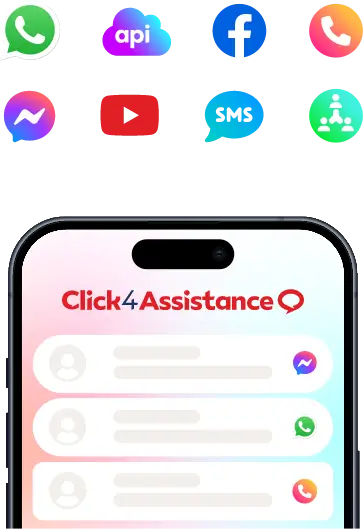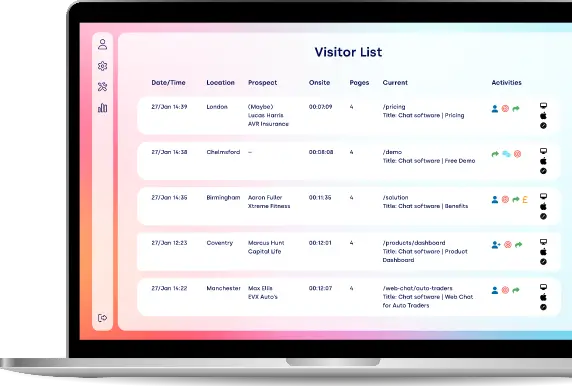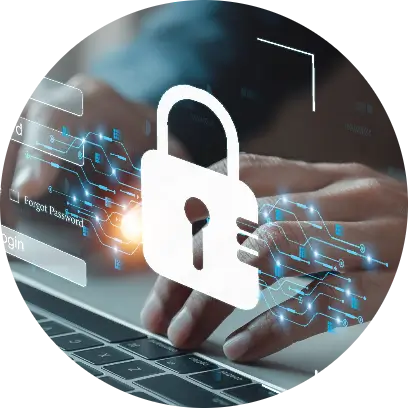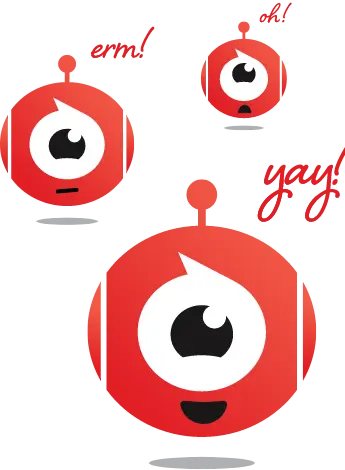Create Chatbot Solutions for Your Website with No-Code in 2025
Create smart, no-code chatbots in 2025 that can enhance customer support, boost sales, and elevate user experience – ideal for any website and requires no technical know-how or complicated setups!
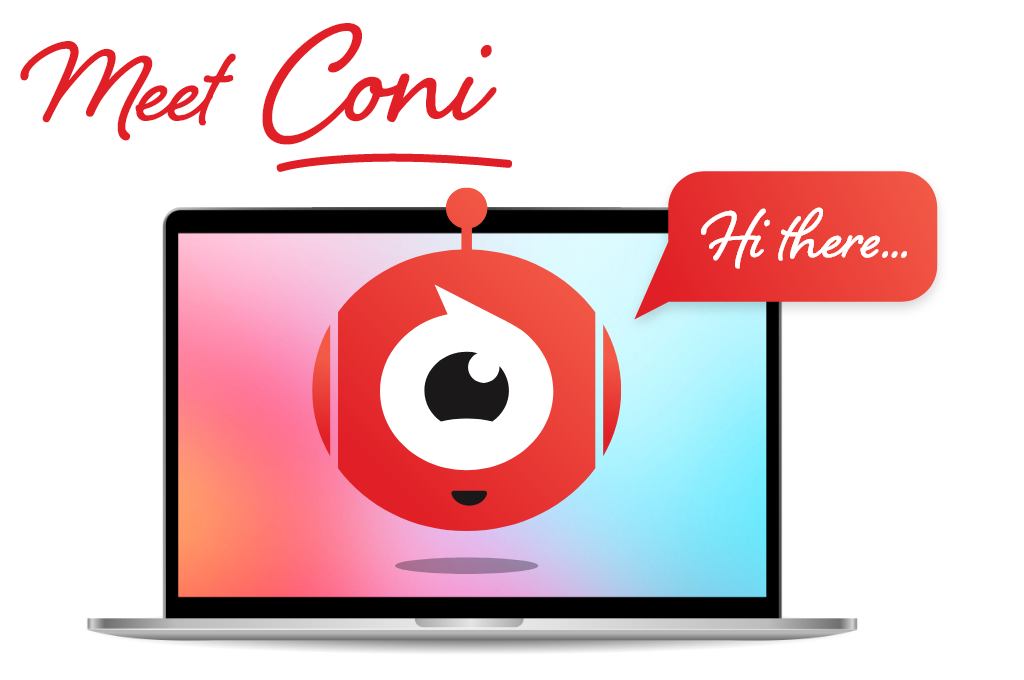
It has never been more straightforward or crucial for businesses in the UK to enhance customer engagement, automate support, and improve conversion rates. Utilising Click4Assistance’s no-code chatbot, you can develop a chatbot for your website – no technical expertise or complex configurations necessary.
Are you seeking a basic chatbot for your website to address frequently asked questions, an advanced conversational AI for business websites, or a sophisticated AI chatbot for customer service and support? We possess all the resources that you require to design, launch, and manage chatbots swiftly and effortlessly.
Interested in incorporating a chatbot into your site? Discover how to integrate a chatbot into your website and begin enhancing your customer experience today.
What is a No-Code Chatbot?
A no-code chatbot is a virtual assistant you can build and launch without writing code. These bots use visual interfaces and drag-and-drop functionality so you can define how the bot talks to users, what questions it asks and how it responds – no coding required.
Instead of waiting weeks or months for IT teams or developers to deliver a working chatbot, you can launch one in under an hour from a browser-based dashboard.
Features of No-Code Chatbots
Modern no-code platforms offer a lot of tools to make chatbot creation easy including:
- Prebuilt conversation templates: Choose from templates for lead capture, FAQs, product support and more.
- Visual conversation designers: Drag-and-drop blocks for messages, questions, buttons and conditional responses.
- Multi-channel deployment: Chatbots can run on your website, SMS, Facebook Messenger, WhatsApp or live chat widgets.
- CRM and live chat integration: Seamless sync with CRM tools and live agent platforms.
- Built-in analytics: See chatbot performance, identify drop-off points and optimise based on real-time user data.
By removing technical barriers, no-code chatbot builders let teams in marketing, sales and customer service take control of digital engagement.
Why Do You Need a Chatbot for Your Business?
As customer expectations change, so must the tools we use to meet them. A chatbot is more than automation – it’s consistency, speed and convenience in your online experience so you can build trust with visitors from the very first interaction.
For growing businesses, especially small and medium sized enterprises (SMEs), a chatbot levels the playing field. You can offer enterprise level service without the cost. Whether you have a small team or operate across multiple time zones, a chatbot means no customer query goes unanswered, regardless of your working hours.
Plus, chatbots can be customised to be your brand voice and tone so your business has a consistent personality across every conversation. This means a more human like, engaging experience that reassures customers and builds loyalty over time. You’re not just helping – you’re building relationships.
The benefits extend internally too. By taking over the repetitive and time-consuming tasks, chatbots free up your support agents to focus on the complex issues, improving job satisfaction and overall efficiency. This blend of automation and human input creates a seamless support ecosystem that scales with your business.
And with integrations into CRM systems, email platforms, calendars and payment gateways, chatbots are more than standalone tools – they’re powerful connectors that glue your entire customer journey together. From capturing leads to scheduling services or processing orders, chatbots make sure everything works together to deliver smooth, frictionless experiences.
In a world where speed, personalisation and availability are non-negotiable, a chatbot isn’t just a nice to have – it’s a key part of future proof business.
As Forbes reports, no-code platforms are now central to enterprise systems, empowering teams to deliver digital tools and automation without long development cycles or technical bottlenecks.
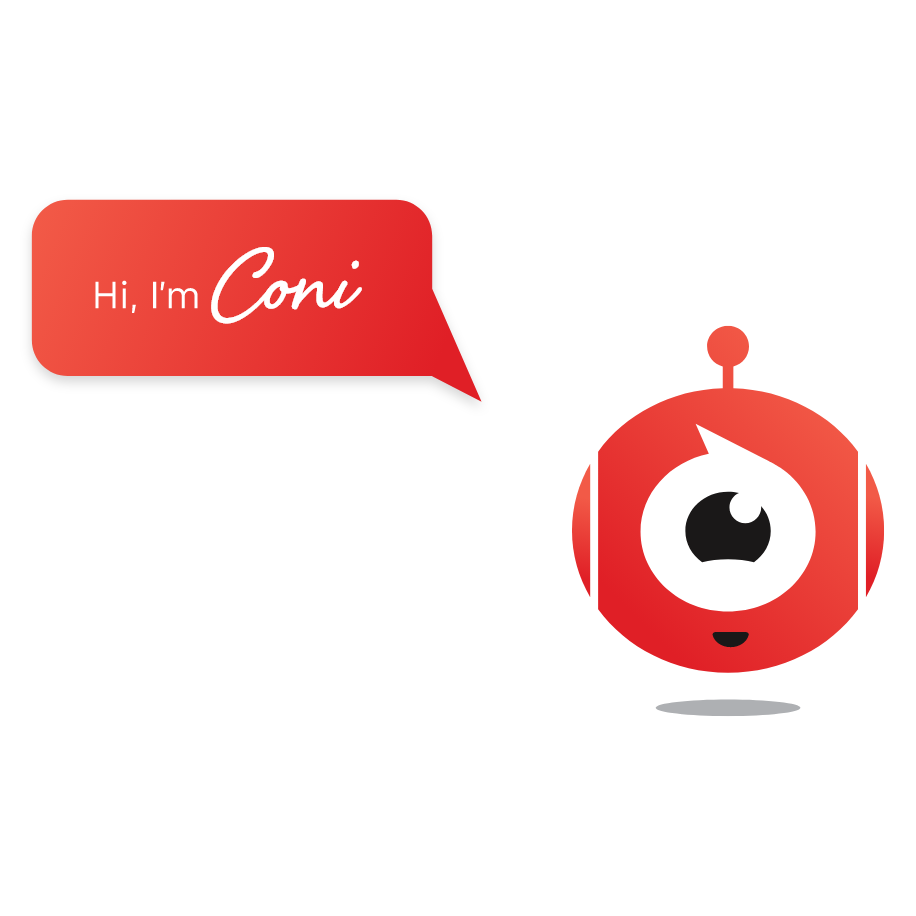
See Coni the Chatbot in Action for Automotive Industries
From automotive to finance and education, our industry-tailored chatbots are designed to meet your specific needs. Discover how chatbots can enhance engagement and streamline customer experiences.
Benefits of a No-Code Chatbot
1. Automate at Scale
Chatbots are built for volume. Unlike human agents, they don’t need breaks, shifts or overtime pay and never get overwhelmed. Whether you’re dealing with a lunchtime rush or an overnight surge in traffic, a chatbot can:
- Handle thousands of conversations at once
- Keep tone and messaging consistent
- Respond instantly, 24/7
This makes them perfect for businesses with seasonal spikes, running campaigns or expanding globally – so no customer is ever left waiting.
2. Improve Customer Experience
Today’s consumers value speed, convenience and personalisation. Chatbots enhance your customer journey by delivering real-time, relevant help from the very first click. They can:
- Greet new visitors with a welcome message
- Offer product or service suggestions based on behaviour
- Help users navigate your site, forms or payment systems
- Answer pre-sale questions instantly
This means smoother interactions, higher customer satisfaction and stronger brand loyalty – especially for digital-first users who prefer self-service.
3. Boost Team Efficiency
Your customer support team should be focused on high-value interactions – not repeating answers to basic, routine questions. Chatbots act as a frontline filter, so your human staff can:
- Focus on complex or sensitive issues
- Manage fewer tickets with more impact
- Handle escalations better
With fewer interruptions and more automation, your team becomes faster, more strategic and less prone to burnout – making support more sustainable as your business grows.
4. Drive More Conversions
Chatbots don’t just wait for questions – they can initiate intelligent, context-aware conversations that drive results. By monitoring user intent and behaviour in real-time, your chatbot can:
- Offer limited-time incentives to users about to leave
- Present dynamic product recommendations
- Invite hesitant buyers to ask questions or book a demo
- Guide leads through sales funnels
This proactive engagement keeps prospects moving forward and prevents indecision from turning into lost revenue.
5. Reduce Support Costs
Hiring, training and managing a full-time support team can be costly—especially if you need 24/7 coverage. A chatbot takes the pressure off by taking on a big chunk of the workload. Benefits include:
- Fewer support agents overall
- Lower average handle time
- Less peak hour staffing pressure
- Cost-effective out of hours service
Whether you’re a small business looking to scale or an enterprise looking to streamline, a chatbot can save you on support costs while maintaining quality.
How to Create a Chatbot in 5 Easy Steps
You don’t need coding skills or a tech team to build a fully functioning chatbot. Thanks to no-code platforms, most businesses can launch a chatbot that delivers results fast. Here’s a simple roadmap to get you started:
1. Define Your Goal
Start by figuring out what you want your chatbot to do. This foundation step determines the entire design and ensures your bot serves a purpose. Common goals are:
- Answer customer support FAQs or troubleshooting questions
- Collect contact details and qualify leads
- Manage online bookings or appointments without manual input
- Guide users through your website for a better navigation experience
- Collect feedback through surveys or rating prompts
A clear goal helps you prioritise features and create conversations that actually address user needs.
2. Design the Conversation
Use a drag-and-drop builder to create the chatbot’s conversation flow, making it natural and fun. Key design tips:
- Start with a warm welcome that sets the tone
- Add buttons and quick replies for easy user choices
- Add questions and form fields to capture info without friction
- Implement conditional logic to personalise interactions based on user responses
- Keep the language friendly, clear and in your brand’s voice—whether formal, casual or playful
By mapping multiple user journeys, you ensure the chatbot can handle different scenarios smoothly.
3. Brand and Style
Make your chatbot feel like part of your business by customising the look and feel:
- Upload your logo and profile image to establish identity
- Choose fonts, button styles and colours that match your website design
- Adjust tone of voice and vocabulary to match your brand values
- Enable light or dark mode to match your website theme
Brand consistency builds trust and makes users feel comfortable talking to your chatbot.
4. Add to Your Website
When your chatbot is ready, add it to your website with a simple code snippet—no coding required. Most chatbot platforms allow you to:
- Place the bot on specific pages where users need the most help
- Set triggers based on user behaviour, such as time spent on a page, scrolling actions or exit intent
- Extend your chatbot’s reach by connecting it to messaging apps like SMS, Facebook Messenger or WhatsApp, for multi-channel support
This means your chatbot will engage with visitors at the right time, on the right platform.
5. Monitor and Refine
Launching your chatbot is just the start. Use built-in analytics to continually improve:
- See how users navigate conversations and where they drop off
- Measure chatbot response accuracy and common unanswered questions
- Analyse engagement metrics like response rates, session duration and conversions
- Use heatmaps and dashboards (available in Click4Assistance) to see user interactions and spot friction points
By reviewing this data regularly you can refine dialogue flows, add new content and make your chatbot smarter—so it remains a valuable asset for your business.
“We introduced a straightforward lead qualification bot on our services page, and the results have been impressive! In just the first month, it helped us capture 40% more inquiries and cut our phone call volume in half.”
- Marketing Manager, Midlands-based law firm
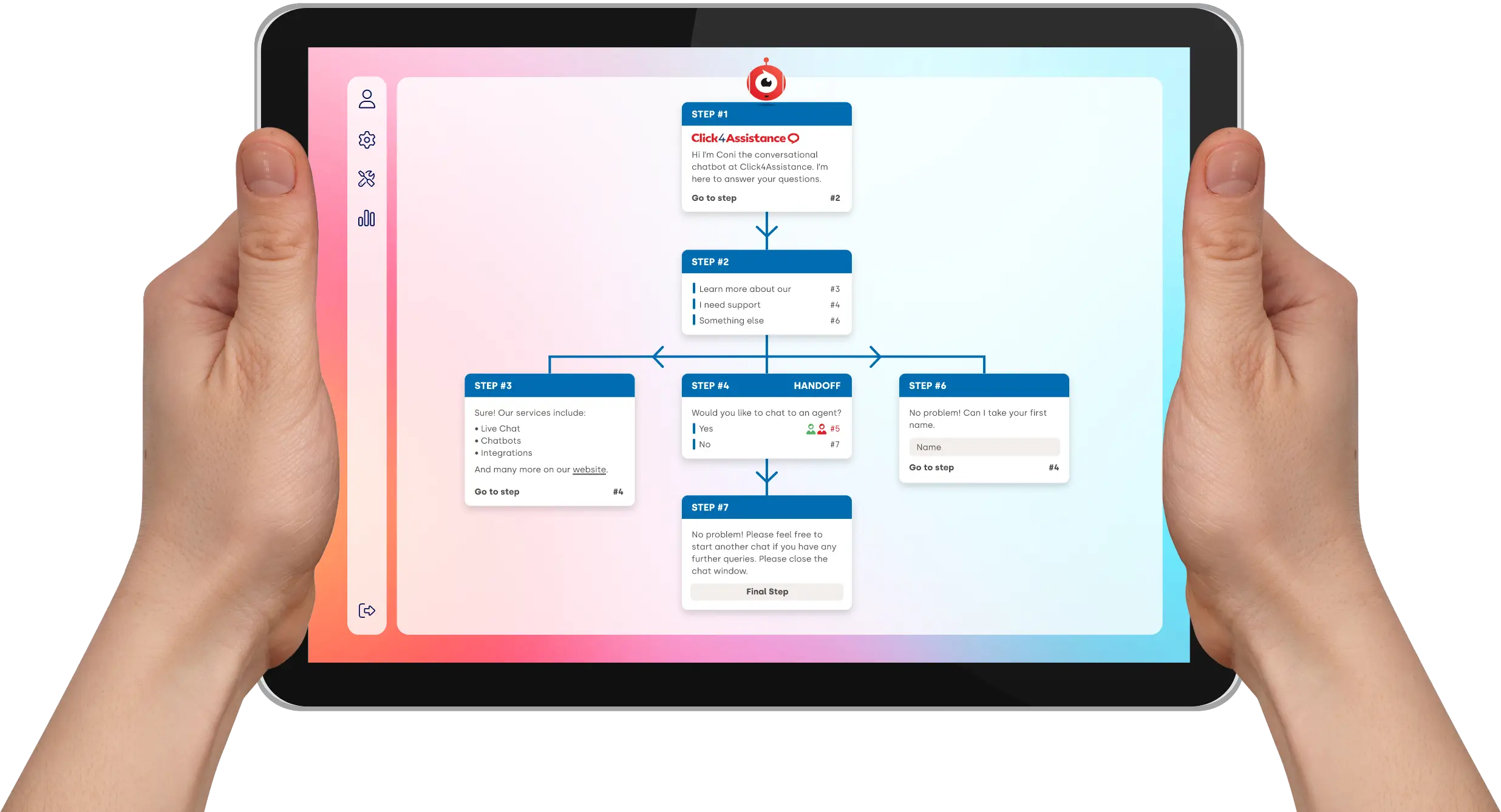
Common Use Cases Across Different UK Industries
Chatbots have shown their flexibility by transforming customer interactions across many sectors in the UK. Here’s a look at how different industries are using chatbots to improve service, efficiency and growth:
- Retail & eCommerce
From browsing to post-purchase support, chatbots cover the whole shopping journey by:
- Offering personalised product recommendations based on user preferences and browsing history
- Providing exclusive discounts or promo codes to first-time visitors or loyal customers
- Managing common queries such as order tracking, returns, refunds and stock availability
- Helping with size guides, payment options and loyalty programme details
By providing fast and relevant support, retailers increase conversion rates and customer satisfaction.
- Healthcare
In healthcare, chatbots play a key role in improving access and patient engagement:
- Simplifying appointment booking and sending automatic reminders to reduce no-shows
- Offering symptom checkers to guide patients on when to see a doctor
- Providing instant access to information on opening hours, vaccination schedules and nearby clinics
- Supporting patient triage and directing urgent cases to the right resources
These features help healthcare providers deliver timely and accurate support and reduce pressure on staff.
- Education
Educational institutions use chatbots to streamline admissions and student support by:
- Guiding prospective students through available courses, entry requirements and application deadlines
- Answering common admissions questions instantly, from tuition fees to scholarship eligibility
- Scheduling campus visits, open days or virtual tours without human intervention
- Helping with enrolment, course registration and exam timetables
This creates a personalised experience that improves recruitment and student satisfaction.
- Financial Services
Banks, insurers and lenders use chatbots to offer secure and convenient support with financial matters:
- Helping customers with mortgage or loan application processes by clarifying required documents and steps
- Providing balance updates, recent transactions and payment reminders
- Guiding users through complex forms such as Know Your Customer (KYC) checks or insurance claims
- Offering product recommendations based on financial goals and risk profiles
These chatbots increase engagement and security.
- Estate Agents
Estate Agent firms use chatbots to speed up lead qualification and client interactions:
- Collecting key information on property preferences like budget, location and size
- Scheduling property viewings and virtual tours with automated calendar integration
- Answering FAQs about neighbourhood amenities, transport links and floorplans* New listings or price changes
This helps agents focus on serious buyers and speeds up the sales process.
- Hospitality and Travel
In hospitality and travel, chatbots make life easier for customers and increase bookings by:
- Managing bookings for hotels, flights or holiday packages 24/7
- Recommending local attractions, restaurants and travel tips based on the guest’s itinerary
- Promoting seasonal offers, room upgrades and loyalty programmes
- Handling cancellations, refunds and special requests
This level of service increases guest experience and repeat business.
In short, if you interact with customers online, there’s a chatbot use case that will add value. Whether you’re improving support, driving sales or streamlining operations, chatbots are scalable and cost-effective solutions for your industry.
“Our chatbot assists us in handling appointment scheduling and frequently asked questions. It functions as a 24/7 receptionist - customers appreciate it, and it has saved us thousands in staffing costs”
- Practice Manager, private dental clinic, Surrey

Powering Customer Engagement Across All Industries
From healthcare to finance, retail to education, our chat platform is designed to meet the unique needs of your UK business. It boosts customer engagement across all industries with customised solutions.
Frequently Asked Questions (FAQs)
Do I need technical knowledge to build a chatbot?
No, you don’t need to know how to code. Modern chatbot platforms have no-code interfaces with drag-and-drop builders so anyone can create and customise a chatbot without technical skills.
Can I match the chatbot to my website’s branding?
Yes, you can fully customise the chatbot to match your brand. This includes uploading your logo, choosing colours and fonts and tone of voice to ensure a professional user experience.
Can my chatbot escalate chats to real agents?
Yes. Advanced chatbots can detect when a conversation needs human intervention, either through specific keywords, user frustration signals or complex queries. The chat will seamlessly handover to a live agent.
How long does it take to launch a chatbot?
Setup time depends on the complexity of your chatbot but many no-code platforms will let you design, test and deploy a chatbot in under an hour. More advanced bots with integrations or custom flows may take longer but still far less time than traditional software development.
Will the chatbot work on mobile?
Yes, chatbots built on modern platforms are fully responsive and work on smartphones, tablets and desktops. So, users get a consistent experience no matter how they access your website.
Can I use a chatbot with WhatsApp or Messenger?
Yes, many chatbot solutions support multi-channel deployment. You can connect your chatbot to popular messaging apps like WhatsApp, Facebook Messenger and more so you can reach customers wherever they prefer to chat.
Conclusion
Creating a chatbot for your website in 2025 has never been easier — or more important. As customer expectations rise and digital is the new norm, UK businesses need fast, clever solutions to stay ahead. With a no-code chatbot platform like Click4Assistance you don’t need to be a developer or have IT support to launch a chatbot that enhances your website experience, supports customers 24/7 and drives more sales.
Whether you want to handle FAQs, qualify leads, book appointments or offer personal guidance, chatbots give you the ability to deliver instant, consistent and scalable interactions. From retail and real estate to healthcare and education, chatbots are changing how UK organisations communicate with their audience — 24/7 service and intelligent automation without adding staff or complexity.
With easy drag-and-drop builders, full branding control, seamless CRM/live chat integration and support for platforms like WhatsApp, Messenger and SMS, building a chatbot is not just quick — it’s future proof.
So, if you want to reduce support costs, increase conversions and improve customer satisfaction, create your chatbot today. No code, no hassle — just better business.
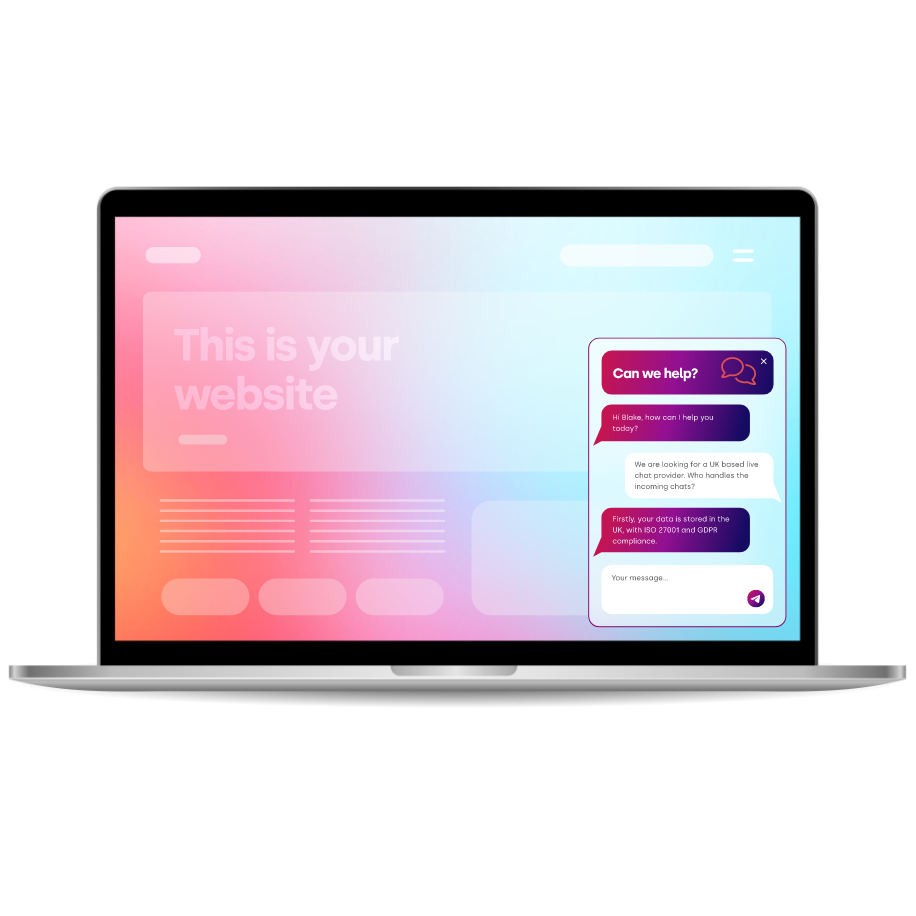
Thousands Trust Us. Will You?
From live chat to AI-powered chatbots and social integrations, Click4Assistance powers real-time engagement - fully UK hosted and trusted across industries.


